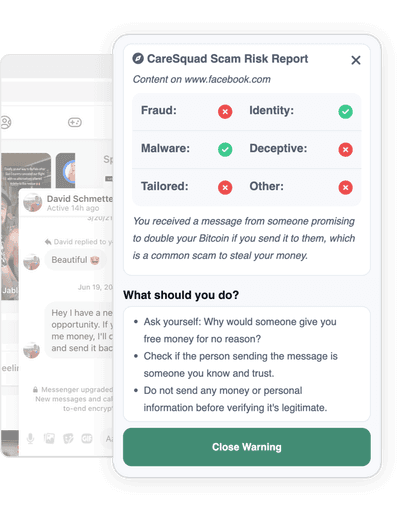
July 4th 2024

By Liam Bolling
Here is a comprehensive analysis on common indicators of phishing attempts, with suggestions for staying safe online:
What is Phishing?
Phishing is a type of online scam where attackers send fraudulent messages designed to trick people into revealing sensitive information like passwords, credit card numbers, or bank account details. These messages often appear to come from trusted sources like banks, social media sites, or online payment processors. The goal is to steal personal data, financial information, or login credentials.
Common Indicators of Phishing Attempts
There are several red flags that can help you spot a potential phishing scam:
Unsolicited messages: Phishing emails or messages are often completely unsolicited and unexpected. If you receive an email out of the blue claiming to be from your bank or a service you use, be cautious - especially if it asks you to click a link or download an attachment.
Generic greetings: Phishing emails often use generic salutations like "Dear valued customer" instead of your actual name. Legitimate businesses will typically address you personally.
Spoofed sender address: Scammers can spoof email addresses to make it look like a message is coming from a legitimate source. Check the "From" field carefully. Even if it looks okay, the actual sending address may be different when you examine the email headers.
Suspicious links and attachments: Avoid clicking on links or downloading attachments from unsolicited emails. Hover over hyperlinks (without clicking) to see if the URL looks suspicious. Be extra wary of shortened links or links with misspellings in the domain name.
Urgent or threatening language: Phishing messages often try to create a false sense of urgency or even threaten consequences if you don't act immediately. Be skeptical of subject lines like "Your account has been suspended" or "Unauthorized login attempt."
Poor spelling and grammar: Many phishing emails have glaring spelling mistakes and poor grammar. Legitimate organizations usually have copy editors to prevent such errors.
Requests for personal information: Legitimate companies will never ask you to send sensitive data like passwords or credit card numbers via email. If you're asked to update your account or payment details, go directly to the company's website by typing the URL into your browser.
Phishing Statistics
The FBI's Internet Crime Complaint Center recorded nearly 300,000 complaints about phishing in 2021, with reported losses exceeding $44 million.
Verizon's 2022 Data Breach Investigations Report found that 82% of breaches involved the human element, including social attacks like phishing.
Microsoft blocked over 35.7 billion phishing and other malicious emails in 2021.
An estimated 75% of organizations experienced some kind of phishing attack in 2020.
Google registered 2,145,013 phishing sites in January 2021 alone. This is up 27% from the previous month.
How to Protect Yourself
While no solution is foolproof, there are steps you can take to minimize your risk of falling victim to a phishing scam:
Educate yourself: Learn to recognize the signs of phishing attempts. The more you know about their tactics, the better prepared you'll be.
Think before you click: Be cautious about clicking links or downloading attachments from unsolicited emails. When in doubt, go directly to the company's website.
Use two-factor authentication: Enable 2FA on your important accounts whenever possible. This adds an extra layer of security even if your password is compromised.
Keep your software up to date: Make sure your operating system, browser, and other software are updated with the latest security patches.
Consider using a browser extension like CareSquad AI: CareSquad is a tool that uses artificial intelligence to analyze web pages and messages for signs of scams. It can provide an extra set of eyes to help spot potential threats as you browse the web. The paid version offers 24/7 monitoring and covers over 10,000 types of scams.
By staying informed and following best practices for online safety, you can significantly reduce your chances of becoming a phishing victim. Tools like CareSquad AI can provide additional peace of mind, but your own awareness and good judgment are still the best defense.










